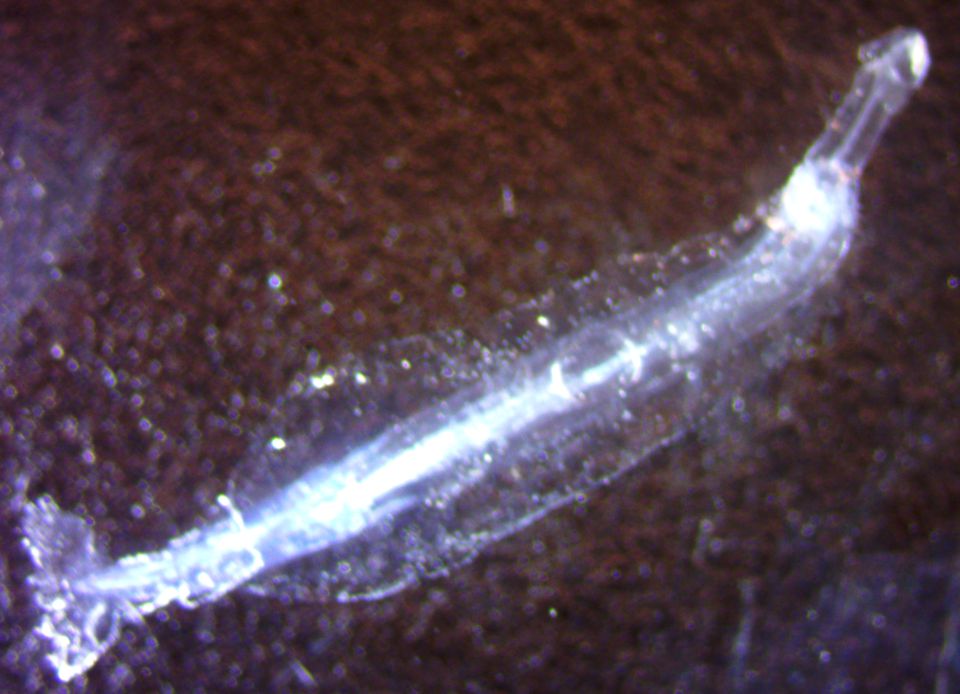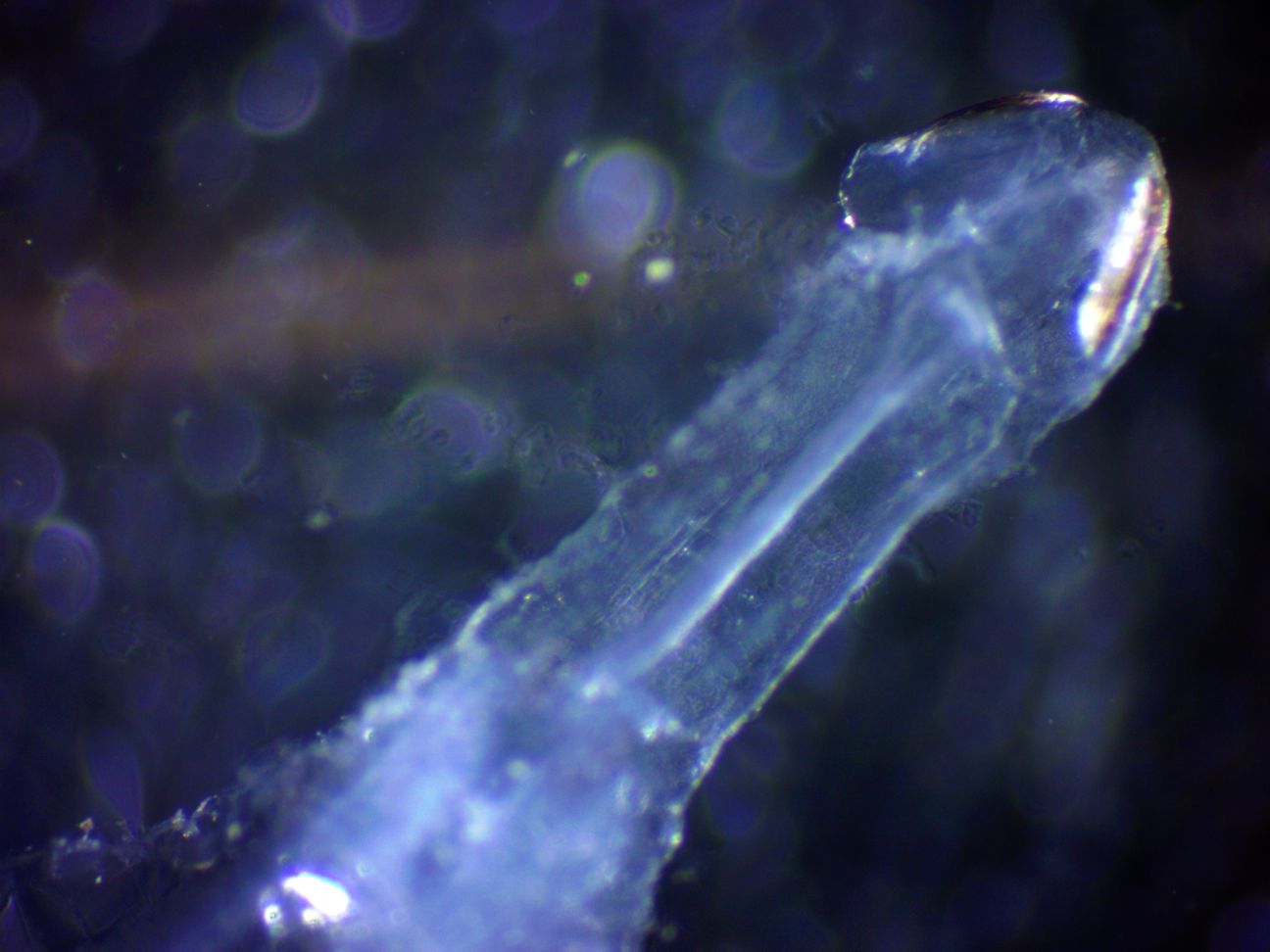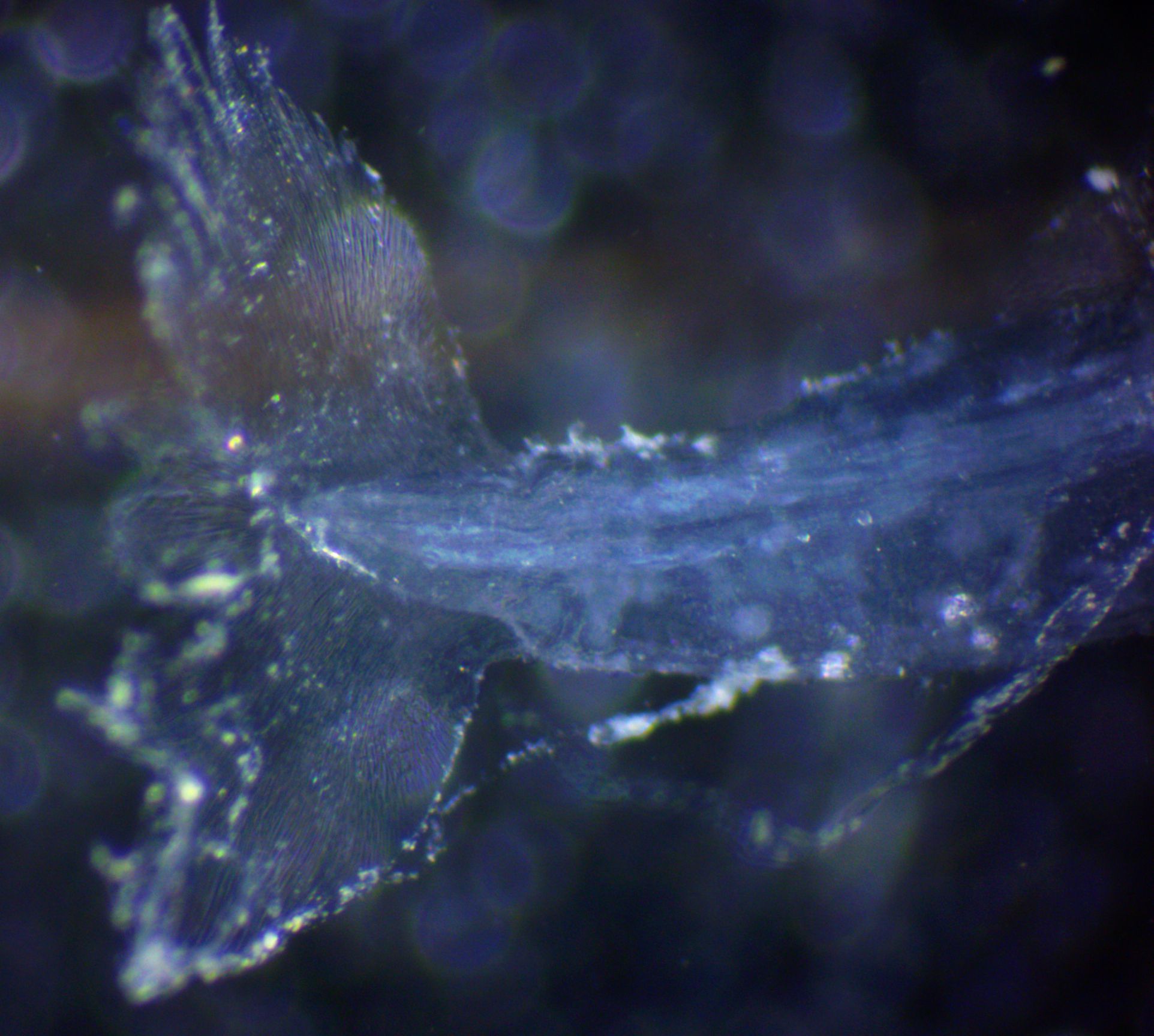Eukrohnia hamata Mobius, 1875Common name(s): Chaetognath, arrow worm |
|
| Synonyms: Eukrohnia borealis |  |
|
Class Sagittoidea
Order Phragmophora
Family Eukrohniidae
|
|
| Eukrohnia hamata, 3 cm long, from an epipelagic midwater trawl off Rosario Beach Marine Laboratory | |
| (Photo by: Dave Cowles, July 2019) | |
Description: This chaetognath has only one, elongated fin on each side and typically has oil droplets in its intestine. Length up to 4.3 cm.
How to Distinguish from Similar Species:Sagitta scrippsae has two, partly joined fins on each side and no oil droplets. Other Sagitta species have two distinct fins on each side.
Geographical Range: Cosmopolitan. Found in all the oceans.
Depth Range: Epi, meso, and bathypelagic. Vertical migration (both daily and as part of their life cycle) is common among chaetognaths.
Habitat: Pelagic. At high latitudes it is epipelagic but lives deeper in warmer, low-latitude water.
Biology/Natural History: Being a planktonic species (and a fierce but tiny predator), this species is almost totally transparent and difficult to photograph or even see. As predators, chaetognaths have distinctive bristle-like jaws and teeth in their mouths to macerate their prey. Chaetognaths are hermaphrodites. They have ovaries suspended in the coelom of the trunk and testes suspended in the coelom of the tail. Neither gonad, however, has a direct external opening. Instead, they release developing sperm into the coelom where they are collected and packed into "sperm balls". Later these sperm balls pass out of the body through sperm ducts. Sperm balls may be attached to other chaetognath individuals. Eggs are released into the coelom by squeezing between cells of the ovary wall, then pass out from the coelum through a duct. Some species release eggs into the water, while others (including in Eukrohnia) carry them attached to their bodies. Eggs often hatch within 48 hours. Chaetognaths do not have a separate larval stage-the young hatching from the eggs are like miniature adults. Chaetognaths have a pair of simple pigment-cup eyes on the head but they are not complex enough to form an image. Their nervous system has two main ganglia-one in the head (the brain) and a ventral ganglion farther back in the trunk. Sensory cilia distributed over the body are likely the main way they sense their environment, especially vibrations in the water. Copepods and larval fish are common prey items.
Members of Order Phragmophora (as this species) have ventral transverse muscle bands that often appear whitish. Chaetognaths have no circular muscles. They swim by flexing their body back and forth rapidly, using the left and right longitudinal muscles. The fins seem to function more as stabilizers than as a propulsive mechanism.
Genus Eukrohnia
contains
mostly deep-water species but E.
hamata is common in Salish Sea waters..
| Return to: | |||
| Main Page | Alphabetic Index | Systematic Index | Glossary |
References:
Dichotomous Keys:Kozloff, 1987, 1996
General References:
Scientific Articles:
Web sites:
SeaLifeBase
General Notes and
Observations: Locations, abundances,
unusual behaviors:

Another photo of the same individual.

This close-up of the anterior body shows the darker-colored grasping spines on the sides of the head, used to capture prey.

Close-up
of the tail. The animal has 3 sections: Head, trunk, and tail, divided
by internal septa. The anus is located right near the septum at the bas
of the tail.
Authors and Editors
of Page:
Dave Cowles (2018): Created original page
CSS coding for page developed by Jonathan Cowles
Salish Sea Invertebrates web site provided courtesy of Walla
Walla University